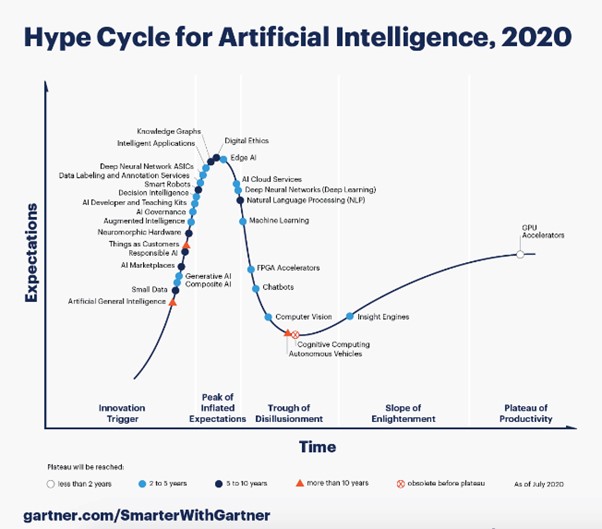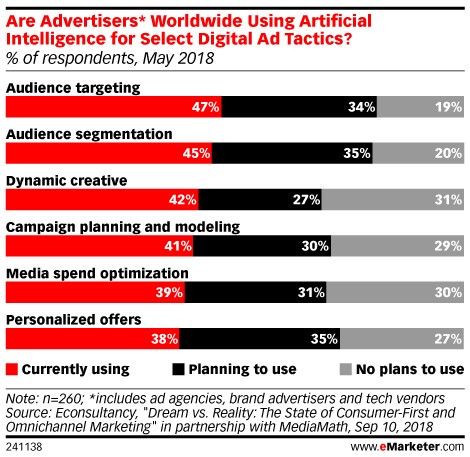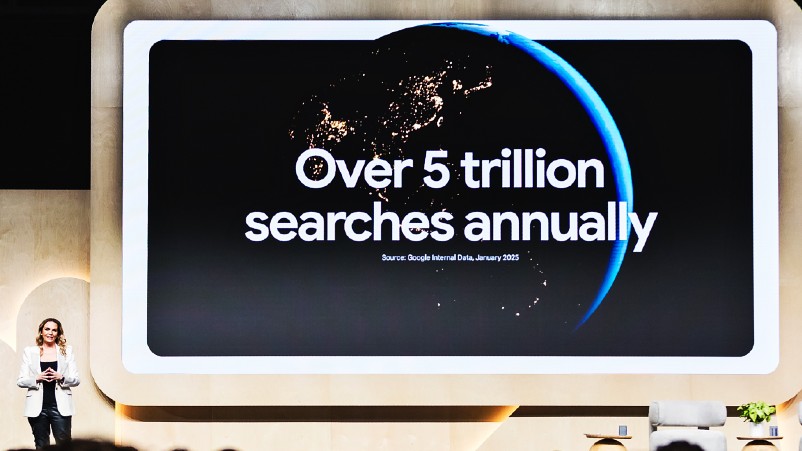The rise of machine learning: navigating pitfalls, exploiting marketing opportunities and avoiding hyperbole – and what to do first to drive ROI

Artificial intelligence (AI) and Machine Learning (ML) remain shiny buzzwords in the marketing toolkit.
Artificial intelligence (AI) and Machine Learning (ML) remain shiny buzzwords in the marketing toolkit. Both are past the peak of hype, but are now entering the trough of disillusionment. Marketers must tread carefully to avoid repeating mistakes of the martech bubble, where expensive investments have often failed to provide return on investment. But there are low cost test and learn programmes that can deliver a clearer picture of benefits and limitations, and chart a course to sharper results – bearing in mind all 2021 modelling will skew wide of the mark.
What you need to know:
- Artificial intelligence (AI) and Machine Learning (ML) are some of the shiniest buzzwords in the marketing toolkit.
- Most digital media campaigns already use AI and ML behind the scenes to optimise targeting and ROI.
- Much like the martech bubble, AI is no silver bullet.
- It will become an important component for marketers to understand benefits and risks – but there are some low cost basics that should always come first.
For about 15 years, until late 2013, it was “the year of the mobile”. Similarly, the year of AI has faced many false dawns. But Gartner reckons it is now “rolling off the ‘Peak of Inflated Expectations’” within its oft-cited hype cycle. So 2021 is definitely not be the year of AI, but it may not be that far off. As such, it’s probably a good time to lift the hood and break down the positives and negatives of artificial intelligence (AI) and machine learning (ML).

Most digital media campaigns already use AI and ML behind the scenes to optimise targeting and ROI.
AI and ML: How did we get here?
AI and ML are used synonymously with growing velocity, and are staking their claim on the market. In 2018, an EConsultancy survey showed that less than 50 per cent of marketers were using AI for digital ad tactics. Fast forward 2.5 years, and adoption is probably closer to 90 per cent, given the digital buying tools used by most media agencies and advertisers have quietly increased their reliance on AI for most optimisation processes.

AI and ML are being adopted in media planning, media mix modelling and yield optimisation.
Facebook and Google use AI and ML to shape user ad experience and optimise budgets to goals. Newscorp, Stan, Netflix use it to suggest content, and Ooh Media uses it to optimise ads in shopping malls.
AI and ML are also being adopted in media planning, media mix modelling and yield optimisation, with early take-up generating positive results.
But to avoid industry falling too far for its own hype, I want to plant a flag in the sand and provide some clarity around the opportunities and pitfalls we have discovered through our recent workings with ML and AI in media planning and buying.
AI and ML without doubt represent important milestones in the evolution of media planning. We are backing these developments at Atomic 212º to provide scientific rigour which complements our planning, reporting and optimisation. We have learned that it requires deft handling and lives up to its promise in most parts, but requires caution in others.
Before exploring the opportunities and pitfalls, it’s worth defining terminology. AI is the more impressive, conjuring images of robots taking over mankind and is indeed the field of science that aims to create intelligence that mimics the neural activity of the human brain.
Machine learning on is a field of maths that programs algorithms to figure out patterns and produce forecasts from these patterns. It is ML that is most prevalent in media buying. It’s an important clarification because stronger media plans are reasonably unlikely to determine the future of humanity, no matter what clients may think. But, used correctly, ML can help produce media plans that are more effective at creating demand for goods and services.
Machine Learning: Opportunities ripe for the plucking
- ML is scientific
ML in particular provides an undeniable science to support or counter a media recommendation. It typically uses at least three years’ data and finds a prediction that is broadly more than 90 per cent accurate to a ‘hold our period’ (a period of data that is not provided to the model, but known and used for comparing the prediction).
The model outputs can produce curious insights, but it is hard to quibble with a mathematical equation that has no bias, states its confidence levels and has many decades of statistical surety built-in. It is the opposite of gut feel and is unswayed by trends, client sensitivities or fear of being shown the door. Herein lies the core value: science over human experience, competitive scenario that benefits the ultimate decision maker.
- ML provides a contrary viewpoint
The results from a ML model provide the basis for a deeper, more valuable discussions with the media agency. No matter which side ‘wins’ the discussion, the contrary or complementary evidence of a model provides a sense check to other media planning methods. Better to measure twice and cut once when there is so much at stake.
- ML can be done in-house
Once the data is assembled (ideally at least three years’ media, competitor, price, product, place data) the tech programs that run machine learning are available at affordable costs. Taking this function in house empowers the marketing department to analyse and build the data for deeper and deeper purposes.
I see a future where a business collates its media, creative and marketing data within a larger ‘data lake’ of all other business information, activating machine learning algorithms to suggest the next promotion, price point, product and media plan.
- ML is quick and always improving
Unlike media mix models of the past, all the calculations are executed within the program and take less than four hours to run. And the clue is in the name: the learning programs become quicker and more accurate. Every time they run, the algorithms learn, allowing more data sources to be brought in for improved accuracy and greater insight.
Machine Learning: Beware the hidden pitfalls...
- ML is based on historical data
For all the scientific methods that ML models employ, they are based on historical data. This means that they are very good at predicting the future based on the past. But, for instance, they could not hold the human judgement as to the impacts of Covid-19 on audience behaviour. For this very reason, the data anomalies in 2020 were so significant that all modelling will be impaired through 2021. With regard to media planning specifically, they do not account for new media opportunities, or new media.
- ML needs a lot of data to provide any real value
The computational power behind these models is awesome. They can crunch through thousands of permutations in minutes. Feeding the beast is often the most challenging aspect of the initial set up. Media plans, competitor spends, creative, and sales data are the basics. We typically spend 2-6 months finding, cleaning and organising these data sets for future use.
- Data for ML models is difficult to source and collate
Businesses are now generating vast data lakes, driven by a vision where every decimal place of operating, financial, product, pricing, placement and promotion data is stored in a unified manner for analysis. But we are still some way off data nirvana. Outside of behemoths like Facebook, Amazon or Google, I suspect it will be many years before most brands are able to source and collate the necessary data to properly feed the machine.
- ML struggles with brand metrics
The modelling will want to work through direct correlation and causation i.e. when we spent in radio, we saw a direct, same day increase in sales. But that is not yet – and may never be – possible. It is a truism of marketing that awareness activity in media takes time to trickle down the funnel to manifest as sales.
- ML will make us all the same
AI and ML will likely homogenise businesses because similar data sets will produce similar insights and recommendations. I would question whether the unique elements of a client’s data will yield seismic business insights such as Nespresso’s “The Choices We Make” campaign, which capitalised on shifting global environmental sentiment to address consumer concerns around ethical production of coffee; or P&G’s #Likeagirl campaign which has smashed cultural and gender boundaries and inspired female empowerment.
Final thoughts: Walk, don’t run
There is no doubt that aspects of AI and ML are becoming integral value-adding components of media planning. I am genuinely excited that businesses will unify data, both marketing and non-marketing, to enable machine learning and AI-driven insight at a speed that traditional agency methods could never hope to match.
My concern relates to the hype that is already prevalent. All machines and algorithms are not born equal. Much like with the overly optimistic and somewhat misguided promises that martech could independently solve customer acquisition, marketing professionals should approach AI and ML with a cost versus benefit versus complexity mindset.
There is huge benefit to be gained from doing the basics: You can test and extract significant ROI from simple media mix models before committing to more time and cost intensive platforms.
In other words, human intelligence, pragmatism and prudence first.






